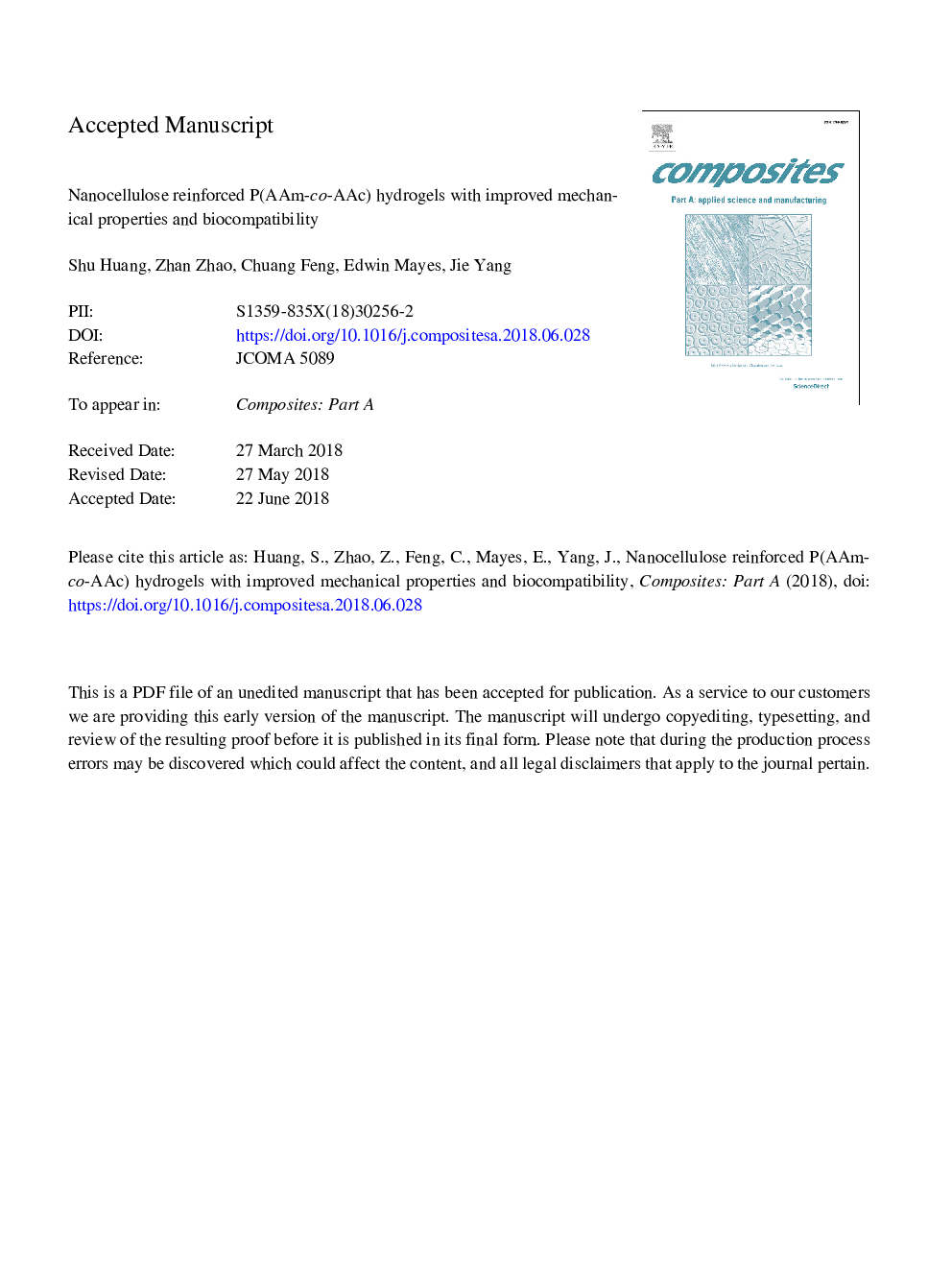| Article ID | Journal | Published Year | Pages | File Type |
|---|---|---|---|---|
| 7889463 | Composites Part A: Applied Science and Manufacturing | 2018 | 29 Pages |
Abstract
Carboxylate modified cellulose nanofibril (CNF) was used to reinforce poly(acrylamide-co-acrylic acid) (P(AAm-co-AAc)) hydrogel via in-situ polymerization. With introduction of Fe3+-carboxylate complexation, a dual cross-linking network structure in the P(AAm-co-AAc)/CNF hydrogels was constructed, i.e. the covalently cross-linked acrylic components forming a macromolecular network, and the noncovalently COOâ-Fe3+ ionic coordination bonds acting as secondary cross-linking points. The microstructure of the hydrogels was characterized by scanning electron microscopy (SEM). By incorporating 0.6â¯wt% CNF, the elastic modulus, tensile strength and toughness of P(AAm-co-AAc) hydrogel were improved by 240%, 104% and 51%, respectively. The addition of CNF also enhanced the energy dissipation in loading and unloading tests. P(AAm-co-AAc)/CNF nanocomposite hydrogels showed water content (70-80%) comparable with that in human cartilage (75%). The biocompatibility tests suggested that P(AAm-co-AAc)/CNF had no toxicity to cells and cells can adhere and proliferate well on the surface, making it suitable for biomedical and tissue engineering applications.
Related Topics
Physical Sciences and Engineering
Materials Science
Ceramics and Composites
Authors
Shu Huang, Zhan Zhao, Chuang Feng, Edwin Mayes, Jie Yang,
